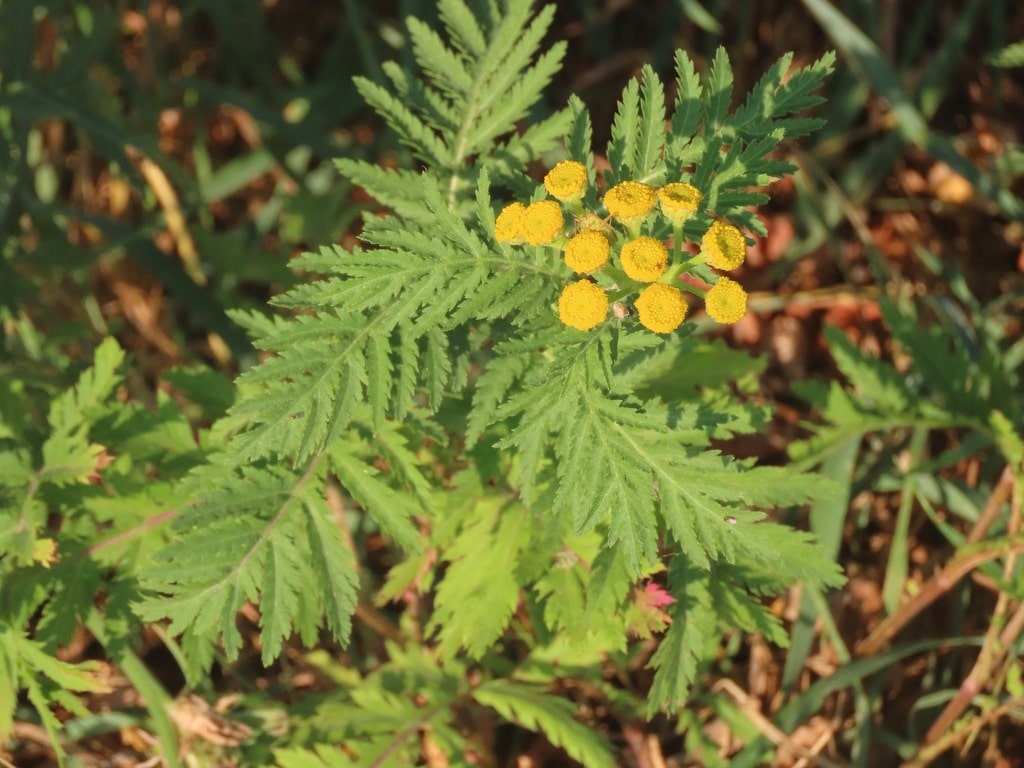By Erin Springinotic | October 5, 2022
In September, the I Spy and Identify Invasives project made 20,404 observations of 3,507 species! 388 people observed and reported native and invasive species across Canada and our network grew by 38 new individuals (and counting) – thank you for joining everyone!
September’s reports included 2,633 observations of 499 different introduced and invasive species. The month’s totals included these concerning sightings:
- 30 observations of Common tansy (Tanacetum vulgare) in British Columbia, Alberta, Northwest Territories, Ontario, New Brunswick, and Quebec. This noxious weed thrives in sunny, disturbed sites and spreads by roots and seed which can remain viable for up to 25 years. Common tansy is toxic to humans and livestock, as its leaves contain neurotoxins, toxic oils, and the pesticide pyrethrin.
- 18 observations of Oxeye daisy (Leucanthemum vulgare) in British Columbia, Alberta, Ontario, and Nova Scotia. Oxeye daisy was introduced to North America in the late 1700s through seed mixes and is now widely established along roadsides, pastures, and rangelands. Infestations of Oxeye daisy can decrease forage for wildlife and supress local plant biodiversity.
- 8 observations of Lesser burdock (Arctium minus) in British Columbia, Alberta, and Ontario. The sticky burrs of this invasive plant inspired the creation of Velcro. These burrs cling to animals that touch the plant – this is especially dangerous for birds and bats as they can become trapped in burdock’s burrs and die.
The following species at risk were also reported throughout September:

2 observations of Coastal tailed frogs (Ascaphus truei) by @abeemcc. These distinctive frogs are endemic to western North America and can be found in cool, fast flowing streams. Tadpoles of this species have large oral suckers which they use to attach to substrates in turbulent waters. The critical stream habitat of the Coastal tailed frog continues to be degraded as a result of forestry and other human activities.

- 1 observation of an Eastern whip-poor-will (Antrostomus vociferus) by @jason_miller. These nocturnal birds are easier heard than seen – their haunting calls have inspired numerous legends. Eastern whip-poor-wills prefer open forest habitats and nest on the ground. This makes them vulnerable to disturbance by predators and people, so watch your step when walking off trail in their range!
Moving into October, we encourage you to watch out for Common carp (Cyprinus carpio), Goldfish (Carassius auratus), and Round goby (Neogobius melanostomus). These invasive fish are often released into waterbodies from the intentional, improper disposal of aquariums. Releasing pets into the wild is cruel, dangerous, and illegal. Remember: Don’t Let It Loose. Thank you to everyone who participated in the I Spy and Identify Project in September, we look forward to seeing what you report in October!
Erin works in Outreach Support at ISCBC. She is grateful to live on the traditional territories of the Songhees, Esquimalt, and W̱SÁNEĆ peoples, also known as Victoria. In her spare time, she loves wandering around in the woods. You can reach Erin at espringinotic@bcinvasives.ca.
Share


















